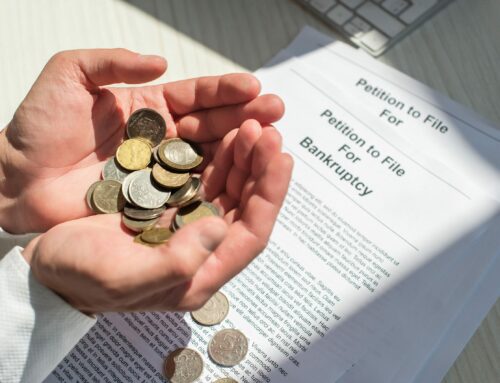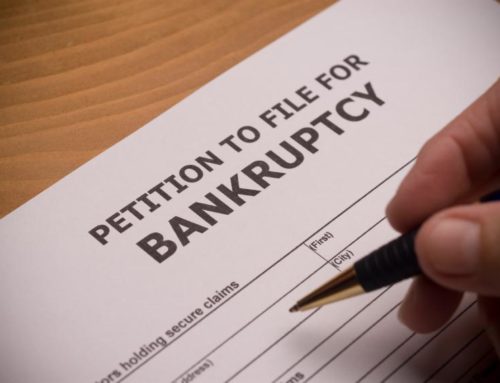Filing bankruptcy can be a daunting process especially if you need to take note of important details that may affect the outcome of the bankruptcy case filed. All debtors who decide to file for bankruptcy must disclose all unsecured and secured debts, also called “creditor claims”, in their official bankruptcy forms. As categorizing a debt can be difficult for first-time filers, this article will help you properly label debts.
Labeling Debts: Secure or Unsecure?
The first step in the bankruptcy process is filing. But before submitting a bankruptcy petition, you will be required to fill out certain paperwork. A petition refers to the cover page of official bankruptcy forms and includes the filer’s name, residence, and bankruptcy chapter filed for. Petitions are submitted together with financial documents reflecting your income, assets and properties, and creditors’ claims.
Once you have listed all debts incurred, you need to classify each as either secure or unsecured. This step is important as you will be using different forms for each category.
1. Secured Debts
Under the Schedule D form, you are expected to list down all secured creditor claims such as home mortgages, payments for car loans, collaterals, real estate tax debt, and property liens.
What is a secured debt? In a secured loan, there is a security interest or “lien” on personal property. If you fail to pay debt obligation, this lien allows the creditor to seize, foreclose, or sell it. Proceeds will then be used to cover the unpaid loan balance. You may determine if your debt fits this category by checking the terms of your contract with a creditor and looking for liens.
What enables a debt to be secured? When buying a home or vehicle, borrowers often use the same property as collateral for the loan. By doing so, they voluntarily give the lender a secured claim. In some personal bankruptcy cases, creditors are able to obtain liens without the debtors’ consent by submitting a collection lawsuit to court and being awarded a money judgment.
2. Unsecured Debts
 Under the Schedule E/F form, you will need to list down all unsecured claims in two parts. Part 1 must include all priority unsecured debts while all remaining debts are listed in Part 2.
Under the Schedule E/F form, you will need to list down all unsecured claims in two parts. Part 1 must include all priority unsecured debts while all remaining debts are listed in Part 2.
What is an Unsecured Debt? In an unsecured creditor claim, there is no lien. There are two types of unsecured debts which you will need to specify in your form: priority unsecured claims, and nonpriority unsecured claims. A priority unsecured claim applies to child support, alimony, tax obligations, student loans, or debts due to violation of laws (personal injury cases or driving under the influence). These debts are not dischargeable, which means the filer must still repay his lenders. In contrast, a nonpriority unsecured claim applies to all utility bills, credit card debt, medical bills, or personal loans which are usually eliminated after a bankruptcy discharge notice is released in court.
What does bankruptcy discharge mean? When a debt is discharged, under the bankruptcy law, you no longer have to make payments for what you owed. However, if the debt contains a lien, then your creditor can still recover the property and auction it off.
Importance of Distinguishing A Secured Claim from Unsecured Claims
Depending on the number of unsecured or secured claims you have, your bankruptcy lawyer may advise you to file for Chapter 7 or Chapter 13 bankruptcy. Types of bankruptcies affect the level of debt relief: which debts get discharged, and which ones you need to pay back.
For instance, filing for bankruptcy under Chapter 7 will not erase priority debts. Your properties will be placed in a bankruptcy estate to be sold off by the bankruptcy trustee, and the proceeds will be applied to these debts. If the amount generated from the liquidation of your properties is insufficient, you will have to pay off the remaining balance. In contrast, under Chapter 13, the debt must be paid in full under a repayment plan which shall include a schedule of monthly payments over a period of three to five years.
Bankruptcy lawyers can help correctly classify a debt and choose the most appropriate bankruptcy chapter to file. Remember, you need to reflect all information accurately in your bankruptcy filing to avoid jeopardizing a petition.
If you are considering filing bankruptcy or you wish to get legal advice while accomplishing your bankruptcy forms, you may contact one of our bankruptcy attorneys at Thomas E. McIntire & Associates, L.C. Our bankruptcy lawyers are experienced in handling both Chapter 7 and Chapter 13 bankruptcy cases. Visit our website or call our office for a free consultation.





